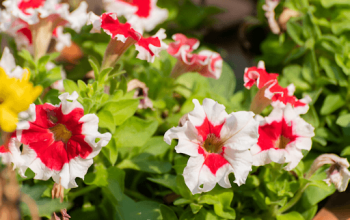Indoor plants are a popular choice for enhancing the aesthetics of our homes and offices. They provide fresh air, improve the ambiance, and offer a connection to nature. However, just like outdoor plants, indoor plants online are susceptible to various diseases that can affect their health and appearance. In this article, we will discuss some of the most common indoor plant diseases and their treatment.
Powdery Mildew
Powdery mildew is a common fungal disease that affects a wide range of indoor plants. It presents as a white, powdery substance on the leaves and stems, and it can lead to leaf distortion and discoloration. The fungus thrives in dry conditions with high humidity and poor air circulation.
Treatment: To treat powdery mildew, remove affected leaves and isolate the infected plant to prevent the spread of the disease. Improve air circulation by placing a fan near the plants and maintain optimal humidity levels. Fungicides formulated for powdery mildew can also be applied, but preventive measures are often more effective.
Root Rot
Root rot is a waterborne disease caused by various fungi, including Pythium and Phytophthora. It affects the plant’s roots, preventing them from absorbing water and nutrients. Symptoms include yellowing leaves, wilting, and stunted growth.
Treatment: To combat root rot, you should ensure proper drainage for your plants. Use well-draining soil and pots with drainage holes. If your plant is already affected, remove it from its pot, trim the infected roots, and repot it in fresh soil. Be cautious with watering, allowing the soil to partially dry between watering to prevent future occurrences.
Leaf Spot
Leaf spot is another common fungal disease characterized by small, round or irregularly shaped lesions on the leaves. It can be caused by various fungal pathogens, and it typically thrives in humid conditions.
Treatment: To treat leaf spot, remove and dispose of infected leaves to prevent the disease from spreading. Maintain good air circulation and ensure your plant is not overcrowded. Fungicides can be used, but proper sanitation and a healthy growing environment are often the best prevention.
Aphids
Aphids are small, soft-bodied insects that are common indoor plant pests. They feed on the plant’s sap, causing leaves to become yellow, distorted, or stunted. They can also produce a sticky substance known as honeydew, which can attract other pests like ants.
Treatment: To get rid of aphids, you can use a strong stream of water to wash them off the plant or introduce natural predators like ladybugs. If the infestation is severe, you may use insecticidal soap or neem oil. Regularly inspect your plants for aphids and take action as soon as you notice them to prevent further damage.
Mealybugs
Mealybugs are another common pest that affects indoor plants. They are small, soft-bodied insects covered in a white, waxy substance. They feed on plant sap and can cause leaf yellowing, wilting, and a weakened appearance.
Treatment: Similar to aphids, mealybugs can be dislodged with a strong stream of water. You can also use a cotton swab dipped in rubbing alcohol to remove them individually. Neem oil or insecticidal soap can be used for more severe infestations. Quarantine newly purchased plants to prevent introducing mealybugs to your existing collection.
Spider Mites
Spider mites are tiny arachnids that feed on the undersides of leaves. They cause stippling, webbing, and leaf discoloration. Spider mites thrive in dry conditions.
Treatment: Increase humidity around your plants by misting them regularly, and ensure proper watering to prevent spider mites. If an infestation occurs, you can use insecticidal soap, neem oil, or horticultural oil to control them.
Fungal Gnats
Fungal gnats are tiny, flying insects that are attracted to the moisture in the soil. They lay their eggs in the soil, and their larvae feed on plant roots, causing damage and weakened growth.
Treatment: To control fungal gnats, allow the soil to dry between waterings and avoid overwatering your plants. You can also use yellow sticky traps to catch adult gnats. Additionally, beneficial nematodes can be introduced into the soil to control the larvae.
Conclusion
While indoor plants offer numerous benefits, they are not immune to diseases and pests. To maintain healthy and thriving indoor plants, it is crucial to be proactive in monitoring their health and providing proper care. Regular inspections, good sanitation, and preventive measures are key to keeping your indoor plants disease-free. If you do encounter issues, identifying the problem early and applying the appropriate treatment can help your plants recover and flourish. By following these guidelines, you can ensure that your indoor green companions remain vibrant and beautiful additions to your home or office.



